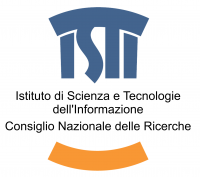Catalin Nicolae Popa, Oliver Nakoinz, Laurie Tremblay Cormier
This session aims to bring together two fundamental components of archaeology: archaeological theory and statistical modelling.
Throughout the years, scholars have convincingly argued that theory is inherent in all archaeological research and have insisted on the necessity to have theoretical concepts explicit rather than implicit. Consequently, most topics of our discipline have been extensively discussed in archaeological theory circles, producing ideas critical for understanding past societies and the discipline itself. However, the methodological implementations of such ideas have seldom convinced.
In contrast, statistical modelling approaches excel in terms of methodology. The use of statistical and computational methods has greatly increased in the last decades, touching a large spectrum of topics such as landscape, social organisation, population dynamics etc. This trend can only continue, given the constant improvements in terms of computational power and software possibilities. Nonetheless, the results of statistical modelling have often been branded as unrealistic simplifications since it is difficult to understand how human behaviour can be described through the mathematical calculations inherent to statistics. Therefore, there is an obvious difficulty in anchoring statistical modelling in the realities of human complexity.
Unfortunately, communication between the scholars working with statistical modelling and those engaged in archaeological theory remains severely limited. Studies employing statistical modelling have generally remained untouched by the discussions taking place within archaeological theory. Conversely, few of the theoretical concepts and ideas produced in archaeology theory have found their implementation through statistical modelling. This situation is somewhat paradoxical given that each of the archaeological approaches has difficulties precisely in the area that the other excels in.
This session will explore how archaeological theory and statistical modelling can be employed together in the effort to understand past societies through the archaeological record. Suggested topics are:
- How can archaeological theory and statistical modelling be connected in general, on a theoretical and methodological (practical) level?
- How have basic elements of human behaviour and society been approached in archaeological theory and statistical modelling (e.g. agency and structure, crafting, trading, land management)? Are the two views compatible with each other?
- Examples where the concepts employed and modelled through statistics are grounded in archaeological theory.
There is a dire need to bridge the gap between archaeological theory and statistical modelling. We hope to start a discussion on the nature of this gap and to produce possible avenues for it to be overcome.


